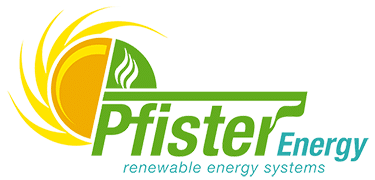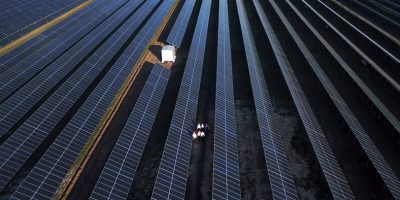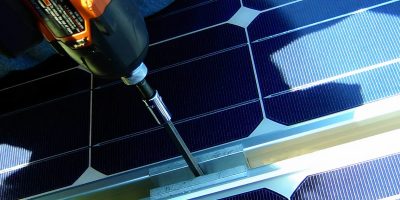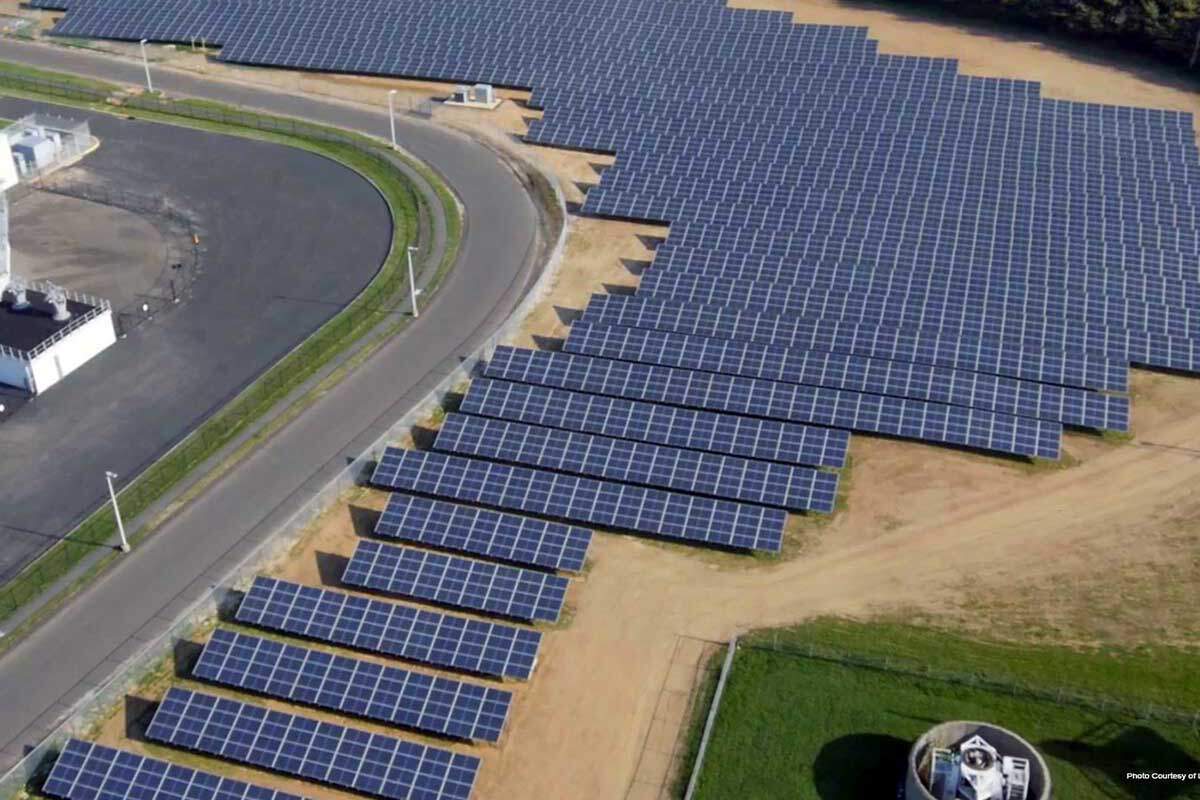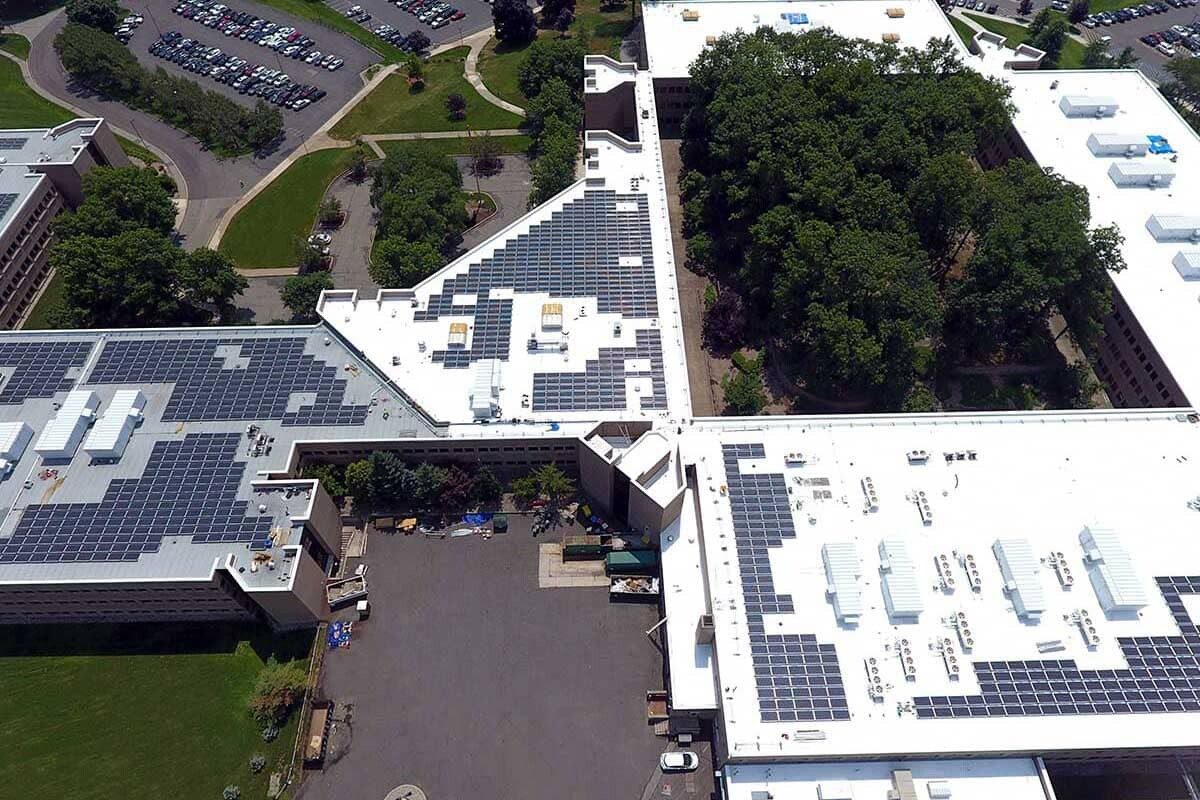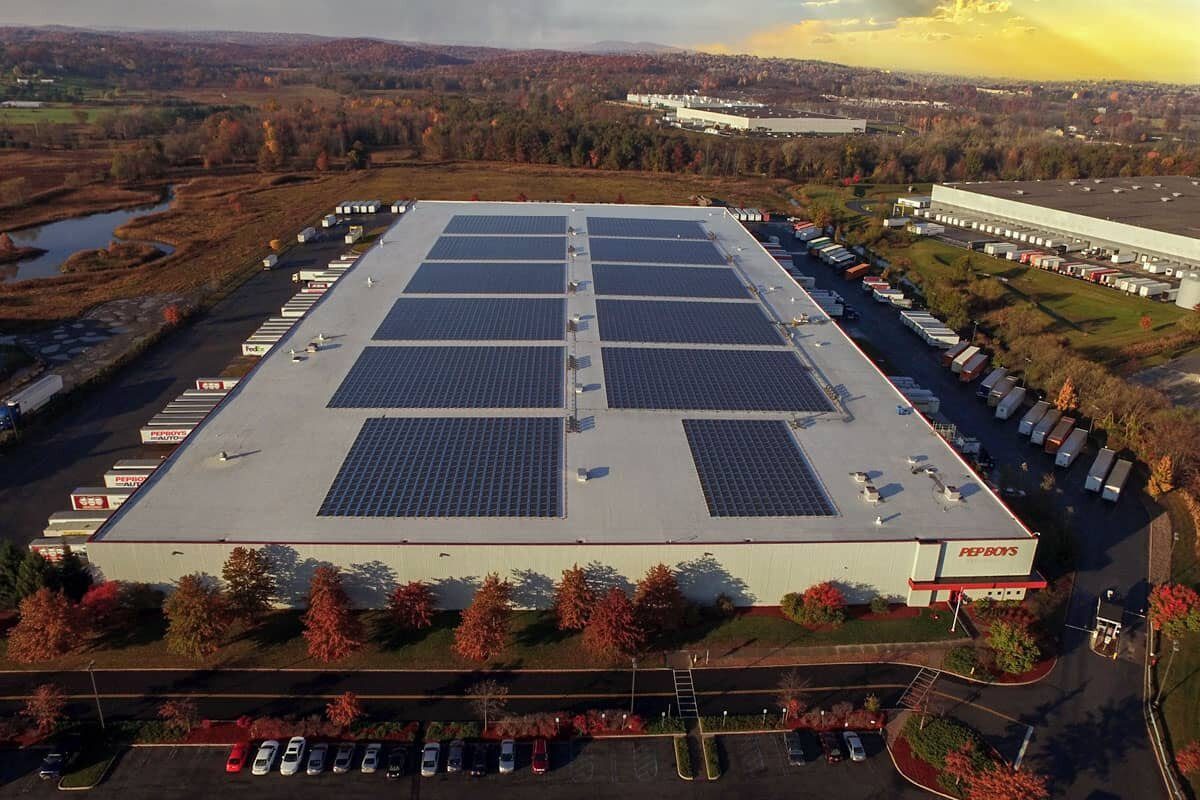
Clean Energy Technologies
Creating synergy,
with clean energy
We provide holistic clean energy solutions that we’ve termed stackable energy technologies. These technologies include microgrids, energy storage, EV charging, solar thermal, building-integrated PV thermal (BIPV), solar lighting, lighting controls, natural daylighting, green roofs, building controls, rainwater harvesting, and the Smartflower.
They are part of a smart, on-site building integrated energy plan that helps optimize each technology. It starts by creating a vision to reduce operating expenses and environmental impact.
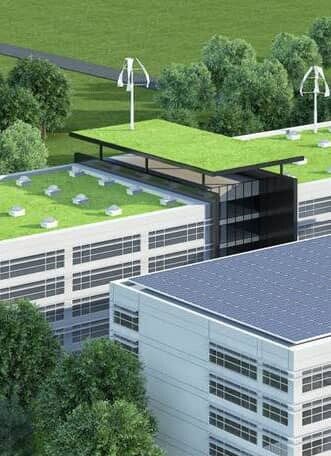
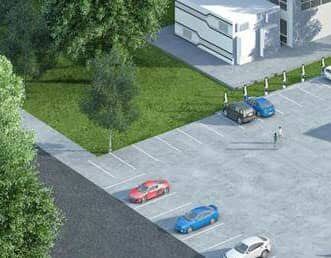
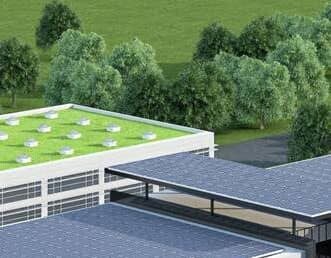
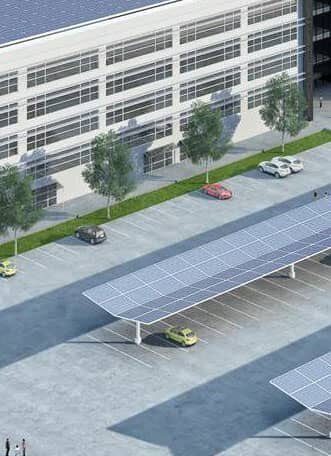
Stackable Energy Technologies™
Most business energy management efforts are band-aids or afterthoughts that don’t truly address the power grid or facility’s broader issues. Yet, a more cost-effective approach now exists.
Embracing
A New Energy
Paradigm
Technology advances are shaping our world. Laptops, tablets, and smartphones have displaced mainframe computers. Similarly, cell phones have replaced landline phones. Likewise, energy generation and distribution are moving from remote power plants to integrated, clean energy sources and technologies.
There are nearly unlimited opportunities for commercial and industrial clients to generate on-site power and promote resource efficiency. During an interview with gb&d, President Wayne Pfisterer stated, “There’s a massive amount of infrastructure inefficiency in the grid that we use. When we look at the commercial rooftops, we see platforms for clean energy technologies.”
There’s a massive amount of infrastructure inefficiency in the grid that we use. When we look at the commercial rooftops, we see platforms for clean energy technology.

Trenton Courthouse, NJ
Solar Thermal
Solar thermal technology harnesses solar energy for thermal energy or heat. This thermal energy is typically used to heat water, but can also be used for space heating.
Commercial or industrial solar thermal systems are most cost-effective in facilities with water heating systems that are expensive to operate, or in operations such as laundries or kitchens that require large quantities of hot water.
A solar thermal system can meet up to 75% of a commercial facility’s annual hot water needs and significantly reduce hot water heating bills.
microgrids
A microgrid is a self-sufficient energy system that serves a distinct geographic footprint, such as a college campus, hospital complex, business center, or neighborhood.
Microgrids, or micro-arrays, are localized grids that can disconnect from the traditional grid to operate autonomously.
Within microgrids are one or more kinds of distributed energy (solar panels, wind turbines, and generators) that produce their power. In addition, many newer microgrids contain energy storage and have electric vehicle charging stations.
Our microgrid engineers understand all the codes and standards and will evaluate your energy needs and building resiliency goals, and can also provide consultation on what government incentives and rebates are available to help you best manage utility spending.
We can help facility managers take maximum control while reducing reliance on utilities.
GEOTHERMAL ENERGY
Geothermal heat pumps or turbines are among the most efficient and comfortable heating and cooling clean energy technologies. Instead of using heat found in the outside air, they rely on the stable, even heat of the earth to provide heating, air conditioning, and hot water.
The heat pump equipment works like a reversible refrigerator by removing heat from one location and depositing it in another location.
The Benefits Of Geothermal Energy
- Significant cost savings
- Reduction of fossil fuels reliance
- Environmentally responsible
- Reliable renewable power
ev charging
EV charging provides a premium experience for your guests, customers, and employees. These systems are excellent for you and your business, as well as the community and the environment.
This is why a growing number of governments and utility companies offer incentives such as rebates, grants, and tax credits that make it easier and more rewarding to own EV charging stations.
Systems can be stand-alone or connected to the grid or your building, and can also work in conjecture with solar energy solutions.
Whether it’s a plug-in or a hardwire installation, Pfister Energy’s in—house licensed electrical contractors are the perfect team to reach out to for all of your EV charging needs.
BUILDING INTEGRATED PV THERMAL (BIPV)
Photovoltaic (PV) thermal collection systems can be added and integrated into the building envelope creating a hybrid solar energy system. Installed during new construction, renovation, or a re-roofing process, the thermal system absorbs heat generated by the sun shining on a roof (or wall), which is then transferred to a concealed thermal collection system.
The systems are concealed below the roof, allowing them to be hidden from the elements. The nearly-indestructible renewable energy system becomes an integral part of a hardened building envelope that provides storm resistance, energy security, and lower operating costs by replacing fossil fuels and electricity with solar energy.
Integrated solar thermal systems qualify for government energy incentives that accelerate payback. Additionally, LEED points are maximized with high-performance hybrid PV Thermal Roofing Systems.
Camp Lejune, NC
NETL Constellation, WV
SOLAR LIGHTING
Solar lighting exterior lamps, similar to many standard exterior fixtures, feature lighting that is visible, pleasant to experience, and flexible to the weather. This provides targeted and controllable lighting without over-lighting or glare and without digging trenches for wires.
To make night navigation easier, this solar-generated, energy-efficient white light portrays the natural colors of surfaces and provides a more accurate sense of the size and shape of objects. In addition, adding solar lighting:
- Reduces energy costs
- Improves security
- Enhances safety
- Requires no wiring and trenching
SMARTFLOWER
Smartflower is the next level of solar energy with smart features that make it up to 40% more energy efficient. Its can’t-miss design makes Smartflower the perfect way to generate clean energy while showing your customers and community what a forward-thinking enterprise looks like.
Pfister Energy is a Smartflower Solar™ certified technician and can provide a free site assessment that includes a shading analysis. Our design-build experts will help take care of the entire Smartflower installation; from placement, operational programming, and connections to the building’s distribution. We will handle all the necessary permitting & warranty applications for your location and maintenance that is required.
Pfister Energy, NJ
energy storage
While there are many great benefits to solar systems, the one downfall is that they are only able to produce energy while the sun is shining which could lead to an issue with supply and demand. Also, if the building or facility is in an area known for bad weather, energy production by the solar system could be limited.
The solution? A battery storage system that stores unused solar energy that was produced in excess to be used when the weather or time of day does not permit the production of solar energy.
Utilizing solar with battery storage to store surplus solar energy is an essential way to get the most out of a solar system. Solar with battery storage can lead to cost savings, more efficient energy grids, and decreased fossil fuel emissions.
LIGHTING CONTROLS
Using a lighting control system can help you
- Enhance safety
- Improve security
- Reduce energy consumption
- Decrease energy costs
- Reach sustainability goals
Bethel, NY
NATURAL DAYLIGHTING
Daylighting systems use a combination of technology and architecture to transform your building into a visible illustration of natural lighting and energy efficiency. By adding a daylighting system to your building, you can introduce natural, bright light to a work area, while significantly reducing power use.
Allowing more daylight into workspaces is a proven renewable energy technology that saves money, increases health and productivity, and improves the quality of a workspace.
Daylighting can eliminate approx. 2.5 million watts of electric lighting per year, resulting in payback from energy savings alone of 2-5 years. This can significantly affect the Net Operating Income of a building or facility.
GREEN ROOFS
A green roof is a roof of a building that is partially or completely covered with vegetation and soil, or a growing medium, planted over a waterproofing membrane. This can provide your building with stormwater retention, reduction of cooling and heating costs, and improvement of air quality.
Public Benefits
- Increase local support for new development.
- Aesthetically pleasing to tenants above buildings with green roofs.
- Access to the outdoors can increase productivity and morale.
- Decreased need for health care services due to the benefits of nature.
- Increase public perception of your corporation.
Candlewood Elementary School, MD
Kohler Distributing, NJ
BUILDING CONTROLS
Building control systems, also known as a building management system (BMS) or a building automation system (BAS) integrate, automate, and help you manage the control systems installed in a building or facility.
This system combines local controllers into a single network so you can monitor all of the building’s mechanical and electrical equipment (including HVAC, ventilation, lighting, power systems, fire systems, security, etc.) from a single dashboard.
The right building control system can help you
- reduce energy costs
- lower maintenance time and costs
- streamline facility management & maintenance
- control and monitor at the facility or remotely
- integrate with existing systems
- reach sustainability goals
Rainwater harvesting
Rooftop rainwater harvesting is the collection, conveyance, storage, and distribution of natural rainwater for non-potable applications. Instead of stormwater immediately running from roofs into sewers, it gets collected and stored for later use.
Rainwater harvesting is ideal for large commercial and industrial buildings, especially ones with expansive parking lots, and can be retrofitted to existing buildings or integrated into new building designs. Not only does the facility save water consumption costs, but it also reduces stormwater runoff on the site.
Goodfellow Airforce Base, TX
